| Title | Pages |
|---|---|
| Ultrastructure of Egg Chorion of Vulnerable Species Morimus funereus Mulsant, 1862 (Coleoptera: Cerambycidae) In this study, the egg chorion of Morimus funereus Mulsant, 1862 is examined. M. funereus, xylophagus and saproxylic species, accelerate the nutrient transformation of forests by separating dead trees. This species is categorised in “VU (Vulnerable)” on the IUCN Red List of Threatened Species and also included in European Habitats Directive. A female specimen of M. funereus was collected from Eskişehir in 2012. The specimen was laid in a laboratory environment. The eggs are whitish cream, oval-fusiform in shape. Polygon patterns (pentagons and hexagons) are visible on the egg surface on SEM images. Two micropyles, one at the anterior pole and the other at the posterior pole, occur in the egg. The micropylar areas are spongiform with pores of various sizes. Chorionic structure and micropylar area of the egg are quite different from other Cerambycidaespecies eggs. Egg surface morphology of M. funereus can be used as basis for further studies and as a tool to compare other species of Morimus. 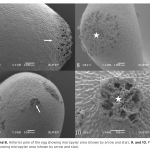
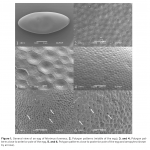
|
315 - 319 |
| Development of a Biosensor Based on Myrtle (Myrtus communis L.) Tissue Homogenate for Voltammetric Determination of Epinephrine Aplant tissue based biosensor was proposed for voltammetric determination of epinephrine (EP) in pharmaceutical samples. The tissue homogenate was immobilized by crosslinking with glutaraldehyde on the glassy carbon. The polyphenol oxidase enzymes present in fibers of a myrtle tree fruits maintained high bioactivity on this biomaterial, catalyzing the oxidation of epinephrine to epinephrinequinone. Under optimize working conditions, the biosensor showed a linear response in the range of 10–100 μM. The limit of detection (LOD) was calculated as 3.2 × 10−6 mol L-1 (3.2 μM) (3σper slope). The reproducibility, expressed as the relative standard deviation (RSD) for seven consecutive determinations of 5.0 × 10-5 mol L-1 EP was 4.6%. The biosensor retained 70% activity after 11 days of storage in a phosphate buffer at 4°C. The applicability of this biosensor was demonstrated with the analysis of real samples and a good correlation was obtained between results acquired by the biosensor and those measured by spectrophotometric method. Such favorable results obtained with the myrtle tissue homogenate based biosensor, joined with the simplicity and low-cost of its preparation turns these procedures very attractive for EP quantification in pharmaceutical products. 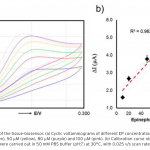
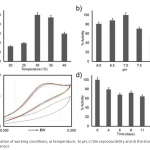
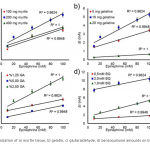
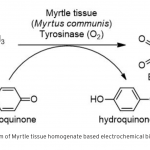
|
321 - 328 |
| The Bioinformatic and Expression Analysis of PSMD4 Gene 26S proteasome non-ATPase subunit 4 (PSMD4) that has a molecular weight of 41 kDa is included on chromosome 1 (1q21.3). PSMD4 protein is a subunit of the 19S regulatory region in the 26S proteasome. The proteasome breaks down proteins that are not needed or non-functional in the cell. We have limited data about the regulation of this gene in the literature. In our research, changes in the mRNA and protein levels of the PSMD4 gene were investigated in different cancer cell lines (prostate, breast, colon, cervix, hepatoma, osteosarcoma and pancreas) and a normal cell (human vein endothelial cell). The highest expression of PSMD4 gene was seen in HUVEC and PC-3 cells. Bioinformatic analysis was also performed on PSMD4 protein for different species namely human, mouse and rat. Our Bioinformatic analyses showed that first 250 nucleotides are much conserved in all three species. 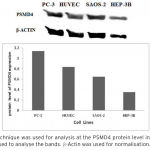

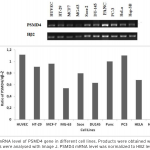
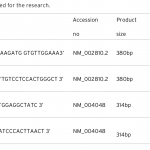
|
329 - 336 |
| Floristic Study for Tarhuna–Libya Asurvey of plant species of Tarhuna was taken in between 2016-2017. A total number of 518 plant specimens have been collected from Tarhuna representing 41 families, 143 genera, and 222 different plant species of which 36 species are belonging to monocotyledons,185 species belonging to dicotyledons, and 1 species belong to Gymnosperms Ephedera alltisma. A total of 126 plant species were reported for the first time from Tarhuna. The results of this study have shown that the dominance of the family Asteraceae with 42 species, followed by the family Fabaceae with 30 species, the family Poaceae with 27 species, and the family Lamiaceae with 11 species. Anthemis glarosa endemic species for Libya confined to the costal belt of Libya has been collected, identified, and reported for the first time from Tarhuna. 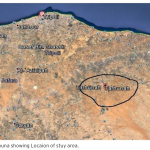
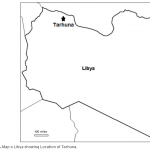
|
337 - 364 |
| Improved Morphology and Biocompatibility of Chitosan/PEO Casting Films Adding Hyaluronic Acid Biopolymer-based blends can be used within the form of cast film in various proportions with polyethylene oxide (PEO) in order to obtain more durable and biocompatible surfaces. Chitosan and hyaluronic acid (HA) are the most used biocompatible biopolymers for the production of films. On the other hand, as a synthetic polymer, PEO has been mostly used to improve durability of the surfaces by using in various molecular weights. This study was carried out to determine the effect of HA on the chitosan and PEO biopolymer blends different from reported Chitosan/PEO film surfaces in the literature. FTIR studies presented no any polycationic amine groups belong to chitosan through the surface of four films in different compositions after casting. Surface morphology were determined by SEM, EDS and polarized microscopy analyses. Surface morphology was observed as well-oriented spherulitic crystallization by the increasing amount of PEO in the films. Astonishingly, it was proven that HA improved the biocompatibility feature of PEO-rich surfaces which were tested by using healthy mouse fibroblast cell lines, L929 (ATCC CCL-1). 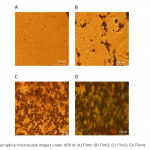
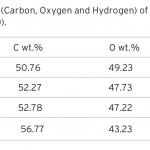
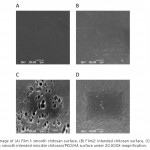
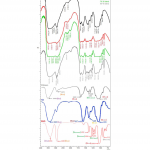
|
365 - 372 |
| Synthesis, Structural Calculations and Molecular Docking Studies of a Novel Uracil Derived Organic Molecule Anovel uracil derived compound, (E)-5-((3-chloro-2-hydroxybenzylidene)amino) pyrimidine-2,4(1H,3H)-dione, was synthesized and characterized using spectroscopic techniques. The interaction of the molecule with DNA was explored using computational methods which revealed that the molecule could act as a groove binder. The physicochemical properties of the molecule such as frontier molecule orbitals and chemical reactivity parameters were also investigated. 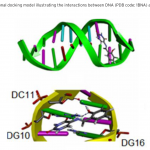
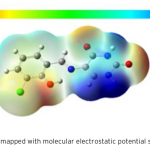
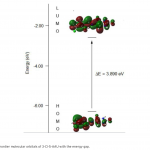
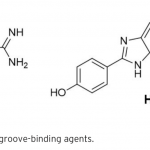
|
373 - 380 |
| PVA Nanofibers Including Biopolymer-grafted Copolymer for Potential Biomedical Applications Multifunctional nanofibers were fabricated by electrospinning of polyvinyl alcohol/octadecylamine montmorillonite layered silicate nanocomposite as a matrix polymer and amphiphilic copolymer-g-biopolymer (polylactic acid, PLA) as a biocompatible partner polymer. Crystal structure of the nanofibers significantly changed due to in situ phase separation processing via different chemical and physical interfacial interactions. Relative high thermal stability, high first melting and low crystallinity were observed for the matrix/polymer nanofibers. Nanofibers exhibit low cytotoxicity and necrotic effect for MC3T3-E1 preosteoblast cells. 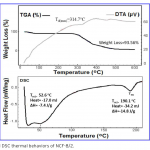

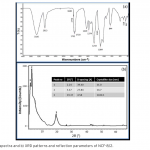
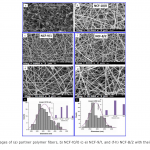
|
381 - 389 |
| A new Anthracoidea (Ustilaginales) Record for Turkey The smut species, Anthracoidea irregularis (Liro) Boidol & Poelt (Anthracoideaceae) on Carex halleriana Asso (Cyperaceae) was reported for the first time from Turkey. The morphological and microscopical features of this fungi are described with figures. 
|
391 - 393 |
| Cytotoxic Activity of Apixaban on HeLa Cells: An in vitro Study Apixaban is a new oral anticoagulant which is commonly used in the prophylaxis and treatment of systemic embolism and deep vein thrombosis. Venous thromboembolic events are important risk factors in cancer patients. Several studies have suggested that anticoagulant drugs may have an effect on tumor development and progression. In this study, we aimed to investigate the cytotoxic effect of apixaban on a cancer cell line HeLa cells derived from human cervical cancer. The viability of HeLa cells was examined at 24 and 48 hours of incubation and apixaban showed a cytotoxic effect in the highest dilution. In other dilutions, cell viability was similar to the control group. These results show that apixaban may reduce proliferation of cancer cells at high concentrations. 
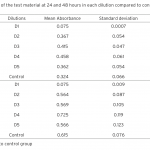
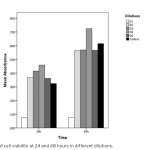
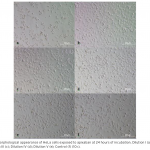
|
395 - 402 |
| A New Hybrid Material for the Removal of Cu(II) and Co(II) Ions from Aqueous Solutions In this study, a new multi-walled carbon nanotube(MWCNT) based hybrid material was obtained and used as adsorbent for the removal of Cu(II) and Co(II) from aqueous solutions. In the synthesis, firstly, the surface of MWCNT was modified via Hummer method to give oxidized MWCNT-O. In the following step, the oxidized MWCNT was treated with 3-aminopropyl triethoxysilane (APTES) to give a silanized form of MWCNT having free amine end groups. Finally, the silanized MWCNT was reacted with 3, 5-dichlorosalicylaldehyde to give the hybrid material. The new hybrid material was characterized by analytical and spectroscopic methods (FT-IR, UV-Vis., TGA, Raman Spectra, SEM, TEM, EDX and XRD studies). The hybrid material was used as adsorbent for the removal of Cu(II) and Co(II) ions from aqueous solutions. The effects of adsorption parameters such as pH, contact time, temperature, and initial concentrations on adsorption behaviors were investigated. 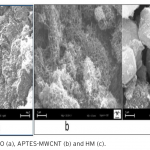
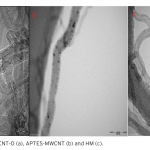

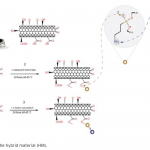
|
403 - 416 |
| Specifying Some Quality Characteristics of Monofloral and Multifloral Honey Samples In this study, the aim was to examine honey samples from different origins with two important methods that are used especially in distinguishing the purity and origin of honey. For this purpose, proline and melissopalynological analyses of honey samples obtained from four different regions of Turkey (Erzurum, Giresun, Hakkari, Rize) were performed. The melissopalynological analyses of the samples were carried out with a light microscope. Proline analysis was performed using the spectrophotometric method. As a result of melissopalynological analyses, samples of monofloral and multifloral flower honey were encountered. The proline ratios of honey samples ranged from 503.46 mg/kg to 696.09 mg/kg. In conclusion, as a result of melissopalynological analyses, proline content of honey samples that were determined to be chestnut honey was generally found to be lower. 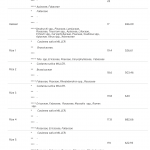
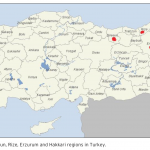
|
417 - 423 |
| The Sufficiency of Deep Hydrocarbons in the South Caspian Region for Turkey and European Union The Caspian Sea region did not appear as an important hydrocarbon province during the Soviet Union. This is because that Soviet Russia has very rich and exploitable oil and gas reserves in areas outside the Caspian region. The Caspian Sea coastal states as Azerbaijan, Turkmenistan and Kazakhstan, after gained their independence, have prioritized assessing the hydrocarbon reserves of the region in line with their governance policies and have started to include external partners in their exploration and development study. In order to develop the long known hydrocarbon assets of the region, the exploration efforts carried out have enabled the discovery of new fields especially in the Azerbaijan sector of the southern Caspian region. In addition, hydrocarbons discovered in the onshore areas of both Kazakhstan and Turkmenistan have made the southern Caspian region the world’s major hydrocarbon province. The tectonic evolution and petroleum systems of the hydrocarbon-bearing basins called as the North Caspian, Middle Caspian and South Caspian basins in the Caspian Sea region, differ in terms of both essential elements and processes. The most important differences of the South Caspian Basin are rapid deposition of more than twenty-five km thickness sediment fill resulting from an avalanche type sedimentation and the presence of the young Tertiary hydrocarbon source rocks and reservoirs. Therefore, generation-migration, accumulation and trapping processes of the South Caspian Basin petroleum system are still continuing. 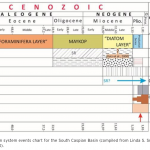
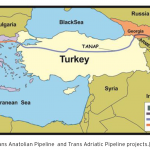
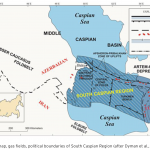
|
423 - 433 |
| Synthesis, Characterization and Biodegradation of Poly(α-Methyl β-Propiolactone) Poly(α-methyl β-propiolactone) (PmPL) was synthesized through anionic ring-opening polymerization of the corresponding lactone. Structural characterization of PmPL was performed by using FTIR, 1H-NMR and MALDI-MS spectrometry. Thermal behavior of the polymer was investigated by using DSC and TGA. Glass transition, melting and thermal degradation temperatures of PmPL were determined as -36.7, 95.5 and 242.4°C, respectively. Biodegradation studies were conducted at 37°C in three different media, that is, pH 7.4 phosphate buffered saline (PBS), PBS containing pancreatic trypsin and PBS containing pancreatic lipase. The biodegradation kinetics and mechanism of the polymer were followed by gravimetric measurements and LC-MS analysis. Up to 65% mass loss in 5-week period was recorded for the buffer media in the presence of lipase and trypsin. LC-MS analysis of the residues in the media revealed that biodegradation undergoes mainly through ester bond hydrolysis. 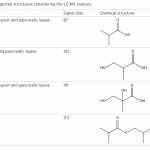
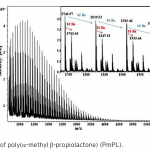

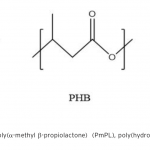
|
435 - 443 |
| Effective Degradation of 2,4,6-Trinitrotoluene (TNT) with a Bacterial Consortium Developed from High TNT-degrading Bacteria Isolated from TNT-contaminated Soil In this study, bacterial strains, capable of using TNT as a nitrogen source, were isolated from TNT-contaminated soil samples collected from military region in Kırıkkale, Turkey. We selected three strains that showed the highest TNT degradation capacity and according to 16S rRNA sequence analysis, the strains were identified asKlebsiella pneumoniae (designated SC1 K1, showed 99% homology), Raoultella planticola (designated SC1 K4, showed 99% homology) and Pseudomonas putida (designated SC1 K5, showed 99% homology). These strain were cultured in medium containing 100 mg L-1 TNT, SC1 K1 degraded 90 % of the initial TNT, SC1 K4 degraded 95 % of the initial TNT, and SC1 K5 degraded 84 % of the initial TNT after 24 h of incubation. Then, to remove TNT more efficiently, we constructed a bacterial consortium with these strains. The developed consortium was cultured in medium containing 100 mg L-1 TNT and the consortium removed 97.2 % of the initial TNT after four-hour incubation period. According to HPLC analyses, The consortium transformed TNT to 2-amino-4,6-dinitrotoluene, 4-amino-2,6-dinitrotoluene and an unknown metabolite. The isolates showed high TNT degradation capacity compared to many previous studies and the developed bacterial consortium can be used to remediate the TNT-contaminated environments. 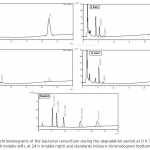
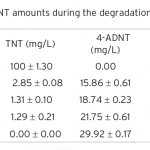
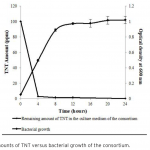
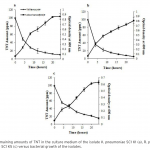
|
445 - 455 |
| Treatment of Baker’s Yeast Wastewater with Freshwater Microalga and Its Green Chemistry Evaluation Baker’s yeast production processes require great amounts of high quality water, where it yields in formation of molasses wastewater and resistant COD (Chemical Oxygen Demand). The Chlorella variabilis microalgae application is studied and evaluated in this paper. The aim was to feed microalgae with the nutrients sustained by molasses; therefore, it was expected an observable growth of them and cleaning of the wastewater. Sample wastewater was 1- centrifuged to remove suspended solids, 2- diluted to various ratios, 3- incubated to grow microalgae, and 4- centrifuged to remove grown microalgae. Final analysis showed the efficiency of COD removal had been maximum 93.33%. The greenness of the method was evaluated by examining the process with respect to principles of green chemistry. It is concluded that the proposed biotechnological approach satisfies 8 principles of green chemistry. 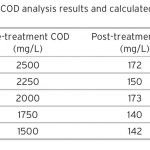
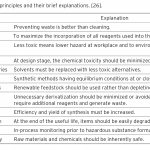
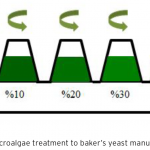
|
457 - 463 |